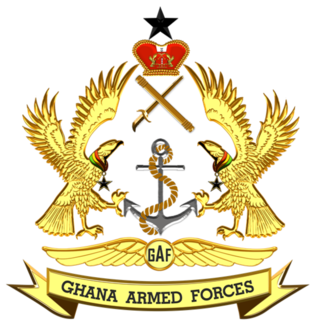
The Ghana Armed Forces (GAF) is the unified armed force of Ghana, consisting of the Army (GA), Navy (GN), and Ghana Air Force.

The Armed Forces of the Republic of Kazakhstan is the unified armed forces of Kazakhstan. It consists of three branches as well as four independent formations. The National Guard, Civil Defense, Border Service and the State Security Service serve as militarized affiliates of the armed forces. The national defence policy aims are based on the Constitution of Kazakhstan. They guarantee the preservation of the independence and sovereignty of the state and the integrity of its land area, territorial waters and airspace and its constitutional order. The armed forces of Kazakhstan act under the authority of the Kazakhstan Ministry of Defence.

The Malian Armed Forces consists of the Army, Republic of Mali Air Force, and National Guard. They number some 7,000 and are under the control of the Minister of Armed Forces and Veterans. The Library of Congress as of January 2005 stated that "[t]he military is underpaid, poorly equipped, and in need of rationalization. Its organisation has suffered from the incorporation of Tuareg irregular forces into the regular military following a 1992 agreement between the government and Tuareg rebel forces."

A regiment is a military unit. Its role and size varies markedly, depending on the country, service and/or a specialisation.

A brigade is a major tactical military formation that typically comprises three to six battalions plus supporting elements. It is roughly equivalent to an enlarged or reinforced regiment. Two or more brigades may constitute a division.

The Royal Corps of Signals is one of the combat support arms of the British Army. Signals units are among the first into action, providing the battlefield communications and information systems essential to all operations. Royal Signals units provide the full telecommunications infrastructure for the Army wherever they operate in the world. The Corps has its own engineers, logistics experts and systems operators to run radio and area networks in the field. It is responsible for installing, maintaining and operating all types of telecommunications equipment and information systems, providing command support to commanders and their headquarters, and conducting electronic warfare against enemy communications.
Commandant is a title often given to the officer in charge of a military training establishment or academy. This usage is common in English-speaking nations. In some countries it may be a military or police rank. It is also often used to refer to the commander of a military prison or prison camp.

The Royal Army of Oman is the ground forces component of the Sultan of Oman's Armed Forces. It was founded in 1907 as the Muscat Garrison. It has a current strength of 35,000 personnel.
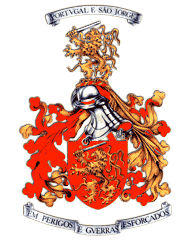
The Portuguese Army is the land component of the Armed Forces of Portugal and is also its largest branch. It is charged with the defence of Portugal, in co-operation with other branches of the Armed Forces. With its origins going back to the 12th century, it can be considered one of the oldest active armies in the world.

Below is an estimated list of the major units deployed within the Multi-National Force – Iraq and other United States military units that were operating in Iraq under the U.S. Central Command (USCENTCOM) in 2009, during the Iraq War.
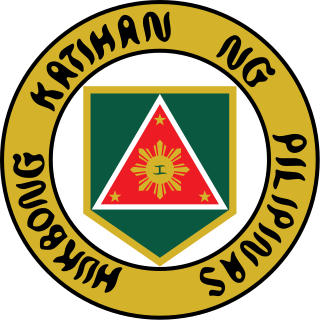
The Philippine Army (PA) is the main, oldest and largest branch of the Armed Forces of the Philippines (AFP), responsible for ground warfare and as of 2021 had an estimated strength of 101,000 soldiers backed by 100,000 ready reserves. The service branch was established on December 21, 1935, as the Philippine Commonwealth Army. The Philippine Army has engaged in many conflicts including the ongoing Communist rebellion in the Philippines, the Moro conflict and, alongside other national military forces, in conflicts of international scope.
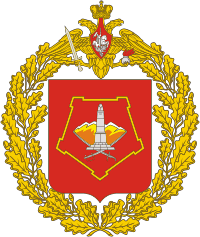
The Volga–Ural Military District was a military district of the Russian Ground Forces, formed on 1 September 2001 by the amalgamation of the Volga Military District and the Ural Military District. The headquarters of the Ural Military District, located at Yekaterinburg became the new headquarters of the merged district. In 2010 the District was merged with part of the Siberian Military District to form the new Central Military District.
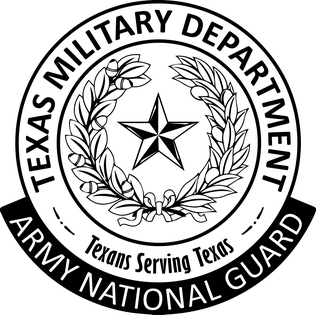
The Texas Army National Guard is a component of the United States Army, the United States National Guard and the Texas Military Forces.

The Ghana Army is the principal land warfare force of Ghana. In 1959, two years after the Gold Coast became independent from the British Empire, the Gold Coast Regiment was withdrawn from the Royal West African Frontier Force and formed the basis for the new Ghanaian army. Together with the Ghana Air Force and Ghana Navy, the Ghana Army makes up the Ghana Armed Forces, which is controlled by the Ghanaian Ministry of Defence and Central Defence Headquarters, both of which are located in the Greater Accra Region.
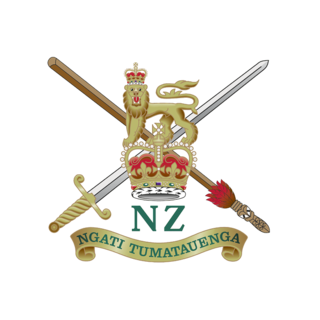
This article describes the current structure of the New Zealand Army. It includes the army's order of battle and the headquarters locations of major units.

The 1st Signal Brigade, formerly known as the 1st Signal Group, is a brigade of the British Army. The group was first formed in 1968 as a result of the 1966 Defence White Paper which expanded support for NATO and the British Army of the Rhine. In 1987, the group was disbanded and merged into the 2nd Signal Brigade. In 1995, the brigade was reformed and has since deployed on operations across the globe in support of NATO and HQ Allied Rapid Reaction Corps.
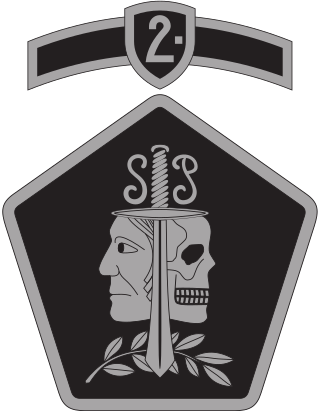
The 2nd Infantry Brigade is an infantry brigade of the Estonian Land Forces. It is the primary military unit in Southern Estonia. The brigade headquarters is currently based at Sirgu village, Luunja Parish, Tartu County. The brigade is tasked with planning and organizing military operations, planning and organizing mobilization, ensuring the readiness and support of its subordinate units, preparing wartime reserve units and their formation, organizing the training and participation in international military operations.

The structure of the British Army is being reorganised to the Future Soldier structure. The Army is commanded by the Chief of the General Staff (CGS), with Army Headquarters which is located in Andover, Hampshire. Subordinate to that post, there is a Commander Field Army, and a personnel and UK operations command, Home Command.

The Belarusian Ground Forces is a service branch of the Armed Forces of Belarus.
The 21st Special Service Group is a command for Malaysian Army special forces, the Gerak Khas. The 21 SSG and 10th Parachute Brigade are elite fighting formations of the Malaysian Army. Both units are independent units under the Malaysian Army and report directly to the Chief of Army. The headquarters of the 21 SSG are at Iskandar Camp in Mersing, Johor.

















